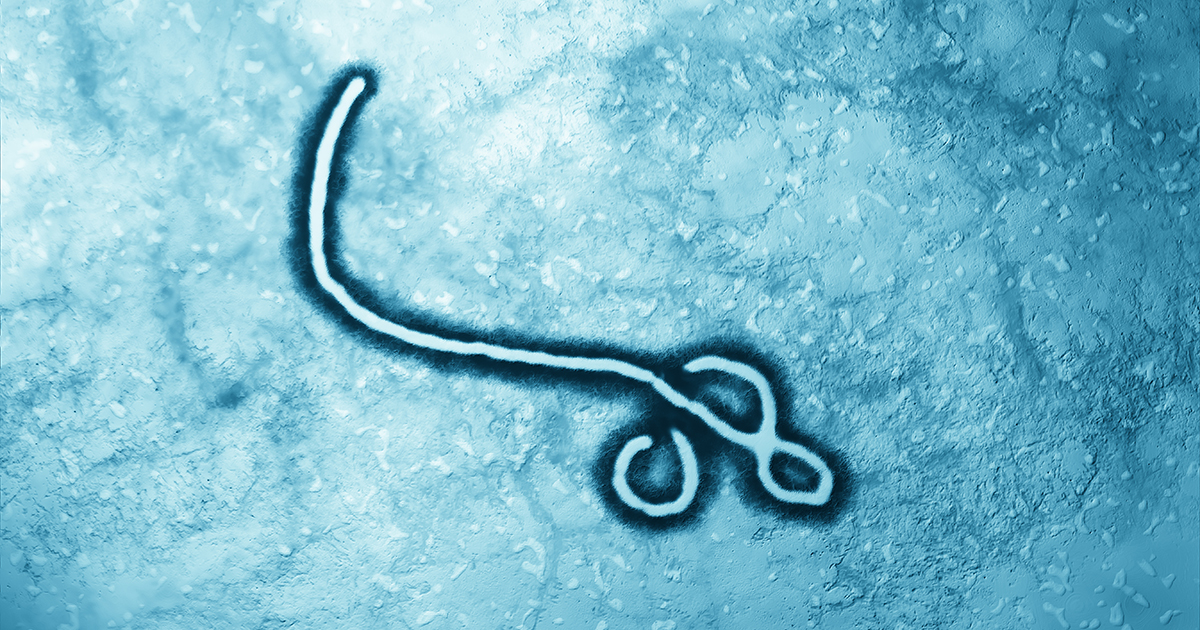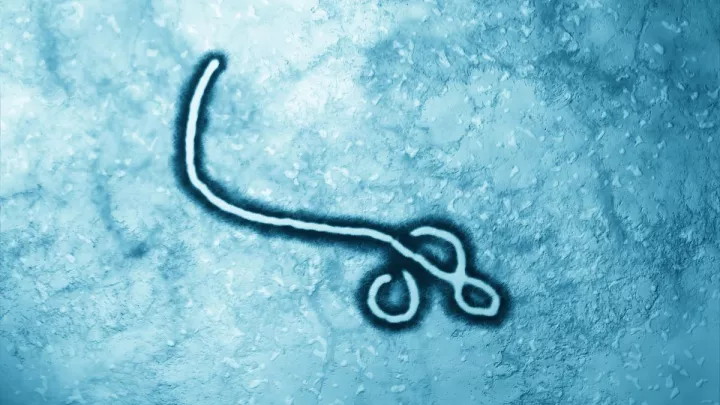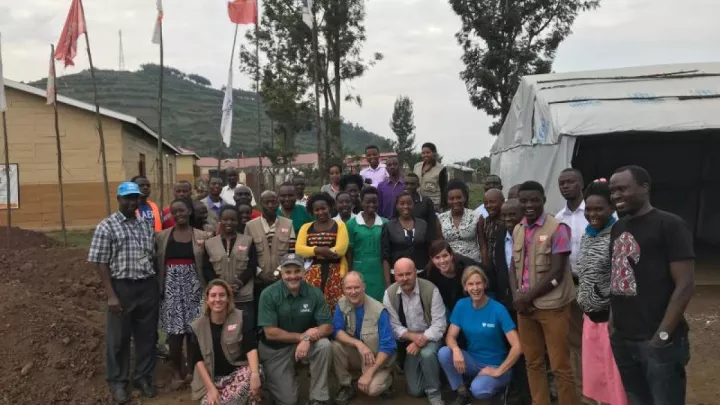Should Americans be worried about the recent Ebola outbreak?

What is Ebola?
Ebola virus was first identified in 1976 when two consecutive outbreaks of fatal hemorrhagic fever occurred in different parts of Central Africa.
Ebola is a filovirus. Filoviruses are zoonotic, meaning they are transmitted from animals to people. Once a person is infected, filoviruses can spread from person to person through direct contact with an infected person's body fluids. Caretakers and health care providers who don't use appropriate personal protective equipment are at the highest risk of infection.
Where is the current outbreak? Have there been any cases in the U.S.?
On Sept. 20, 2022, The Ministry of Health of Uganda officially declared an outbreak of Ebola virus disease, also known as EVD, caused by Sudan virus (species Sudan ebolavirus) in Mubende District, Central Uganda. As of Nov. 5, 2022, a total of 132 confirmed cases of EVD have been identified in Uganda; 39% of confirmed cases have died. To date, 61 patients with confirmed EVD have recovered from the illness and been discharged.
No suspect or confirmed EVD cases related to this outbreak have been reported in the United States or other countries outside of Uganda to date. Travel volume from Uganda to the U.S. is low, and there have been no direct flights from Uganda to the U.S. since Oct. 7, 2022. U.S.-bound air passengers who've been to Uganda are being redirected to five U.S. airports where they undergo entry health screenings designed to reduce the risk of introducing and spreading disease in the U.S.
What is different with this current outbreak?
"In 2014, the large outbreak of Ebola that occurred in West Africa was Ebola Zaire," says infectious diseases expert Angela Hewlett, MD. "This Sudan ebolavirus is a completely different species of the virus. The mortality rate of disease caused by the Sudan ebolavirus is known to be typically lower (39% mortality rate) than with Zaire ebolavirus. But that being said, it's still a very high number and a very severe disease."
What are the symptoms of Ebola?
Symptoms of Ebola may appear anywhere from two to 21 days after contact with the virus, with an average of eight to 10 days. The course of the illness typically progresses from "dry" symptoms initially (such as fever, aches and pains and fatigue). It then progresses to "wet" symptoms (such as diarrhea and vomiting) as the person becomes sicker.
Primary signs and symptoms of Ebola often include some or several of the following:
- Fever
- Aches and pains, such as severe headache and muscle and joint pain
- Weakness and fatigue
- Sore throat
- Loss of appetite
- Gastrointestinal symptoms including abdominal pain, diarrhea and vomiting
- Unexplained hemorrhaging, bleeding or bruising
- Other symptoms may include red eyes, skin rash and hiccups (late-stage)
Many common illnesses can have the same symptoms as EVD, including influenza (flu), malaria or typhoid fever.
How does the Ebola virus spread?
Scientists think people are initially infected with Ebola through contact with an infected animal, such as a fruit bat or nonhuman primate. After that, the virus spreads from person to person, potentially affecting a large number of people.
"Ebola is not an airborne disease, which makes it harder to transmit. This is in contrast to what we've been dealing with regarding COVID-19," says Dr. Hewlett. "Also, a person with Ebola virus disease isn't typically contagious until symptoms appear. That's also different from COVID-19, where people who have no symptoms at all can spread the virus."
The Ebola virus spreads through direct contact (such as through broken skin or mucous membranes in the eyes, nose or mouth) with:
- Blood or body fluids (urine, saliva, sweat, feces, vomit, breast milk, amniotic fluid, semen and vaginal fluids) of a person who is sick with or has died from Ebola virus
- Objects (such as clothes, bedding, needles and medical equipment) contaminated with body fluids from a person who is sick with or has died from EVD
- Infected fruit bats or nonhuman primates (such as apes and monkeys)
The virus can remain in certain body fluids (including semen) of a patient who has recovered from EVD, even if they no longer have symptoms of severe illness.
When people become infected with Ebola, they don't start developing signs or symptoms immediately. This period between exposure to an illness and having symptoms is known as the incubation period. A person can only spread Ebola to other people after they develop signs and symptoms of Ebola.
What is the prognosis for someone with Ebola?
Ebola is a rare but severe and often deadly disease. Recovery from EVD depends on good supportive clinical care and the patient's immune response. Studies show that survivors of Ebola virus infection have antibodies (proteins made by the immune system that identify and neutralize invading viruses) that can be detected in the blood up to 10 years after recovery. Survivors are thought to have some protective immunity to the type of Ebola that sickened them.
How do you treat Ebola?
There are currently two treatments approved by the U.S. Food and Drug Administration to treat EVD caused by the Ebola virus, species Zaire ebolavirus, in adults and children.
"Unfortunately, the Sudan species is different enough from Ebola Zaire that it renders those products useless," says Dr. Hewlett. "Because the current outbreak is caused by a new species of ebolavirus, the vaccine and the two products that are FDA approved for management of Ebola can't be used to treat these patients."
Dr. Hewlett adds that the mainstay of treatment for Ebola, regardless of the species, is supportive care. Whether or not other treatments are available, basic interventions can significantly improve chances of survival when provided early. These include:
- Providing fluids and electrolytes (body salts) orally or through infusion into the vein (intravenously)
- Using medication to support blood pressure, reduce vomiting and diarrhea, and to manage fever and pain
- Treating other infections if they occur
"We learned a lot in 2014 about managing patients with Ebola," explains Dr. Hewlett. "We learned the importance of supportive care and how to do clinical trials during an outbreak to find therapeutic agents that work. If we end up managing a patient at Nebraska Medicine during this outbreak, we'll participate in a clinical trial with a therapeutic agent candidate that we hope will be effective for Sudan virus disease."
What can I do to protect myself from Ebola?
When living in or traveling to a region where Ebola virus is potentially present, there are several ways to protect yourself and prevent the spread of EVD.
- Avoid contact with blood and body fluids (such as urine, feces, saliva, sweat, vomit, breast milk, amniotic fluid, semen and vaginal fluids) of people who are sick
- Avoid contact with semen from a man who has recovered from EVD until testing shows that the virus is gone from his semen
- Avoid contact with items that may have come in contact with an infected person's blood or body fluids (such as clothes, bedding, needles and medical equipment)
- Avoid funeral or burial practices that involve touching the body of someone who died from EVD or suspected EVD
- Avoid contact with bats, forest antelopes and nonhuman primates (such as monkeys and chimpanzees) blood, fluids or raw meat prepared from these or unknown animals (bushmeat)
After returning from an area experiencing an Ebola outbreak, people should monitor their health for 21 days and seek medical care immediately if they develop symptoms of EVD.
What is the role of Nebraska Medicine in responding to the current outbreak?
Nebraska Medicine is one of the founding institutions of the National Emerging Special Pathogens Training and Education Center. Before the 2014 large West African Ebola outbreak, there were only three biocontainment units in the United States with high-level capabilities to care for patients with highly hazardous communicable diseases like Ebola. Today, 10 regional treatment centers are scattered throughout the U.S. with that capability.
"Nebraska Medicine is the lead treatment center for region seven, which includes several surrounding states," says Dr. Hewlett. "That means we're leading preparedness efforts: gearing up our teams, making sure we have appropriate staffing and that our PPE supplies are robust, and checking our activation protocols for the biocontainment unit."
The National Quarantine Unit is also located on the Nebraska Medical Center campus. It is the only facility of its kind in the United States. "This means if an American has a high-risk exposure to Ebola and needs to be monitored, the U.S. government would likely bring them to our quarantine unit for observation," explains Dr. Hewlett.







